 by our College Data Analytics Team
by our College Data Analytics TeamSXU total enrollment is approximately 3,764 students. 2,878 are undergraduates and 150 are graduate students.
Male/Female Breakdown of Undergraduates
The full-time SXU undergraduate population is made up of 65% women, and 35% men.
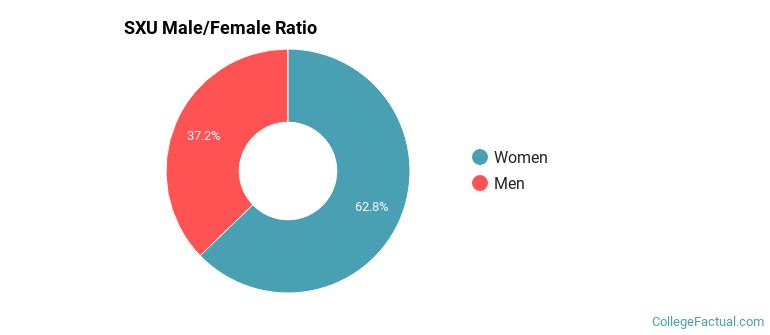
For the gender breakdown for all students, go here.
SXU Racial/Ethnic Breakdown of Undergraduates

| Race/Ethnicity | Number |
|---|---|
| Hispanic | 1,298 |
| White | 1,063 |
| Black or African American | 319 |
| Asian | 77 |
| Multi-Ethnic | 63 |
| Unknown | 55 |
| Native Hawaiian or Pacific Islander | 1 |
| International | 0 |
See racial/ethnic breakdown for all students.
Male/Female Breakdown of Graduate Students
About 77% of full-time grad students are women, and 23% men.
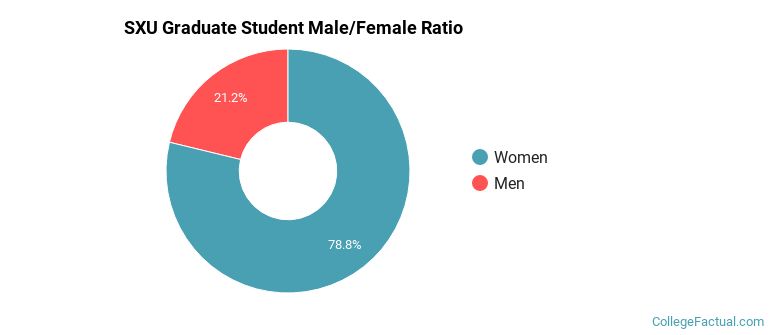
For the gender breakdown for all students, go here.
SXU Racial-Ethnic Breakdown of Graduate Students
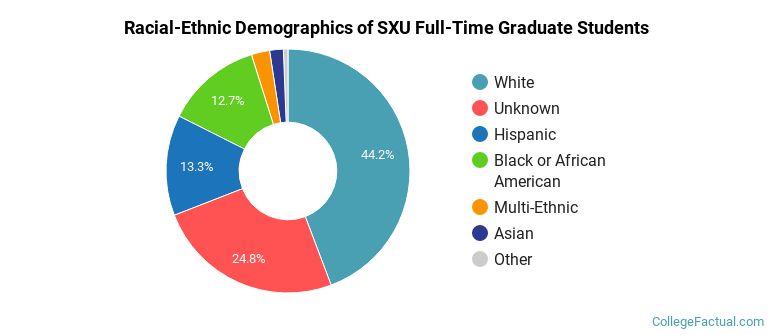
| Race/Ethnicity | Number |
|---|---|
| White | 71 |
| Unknown | 38 |
| Black or African American | 18 |
| Hispanic | 17 |
| Asian | 5 |
| Multi-Ethnic | 1 |
| Native Hawaiian or Pacific Islander | 0 |
| International | 0 |
See racial/ethnic breakdown for all students.
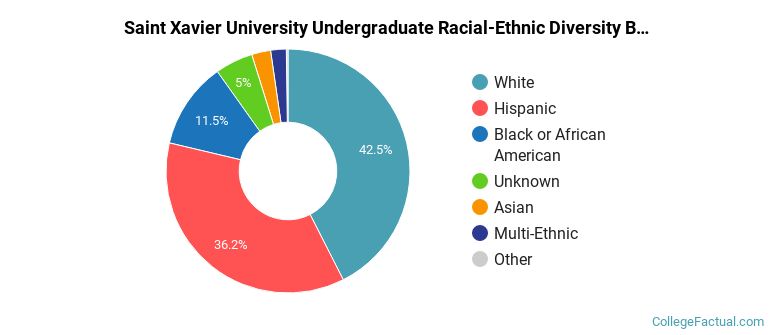
| Race/Ethnicity | Number |
|---|---|
| White | 1,499 |
| Hispanic | 1,465 |
| Black or African American | 472 |
| Unknown | 147 |
| Asian | 103 |
| Multi-Ethnic | 75 |
| Native Hawaiian or Pacific Islander | 1 |
| International | 0 |

There are approximately 2,490 female students and 1,274 male students at SXU.
SXU ranks 1,854 out of 2,183 when it comes to geographic diversity.
3.25% of SXU students come from out of state, and 0% come from out of the country.

The undergraduate student body is split among 4 states (may include Washington D.C.). Click on the map for more detail.
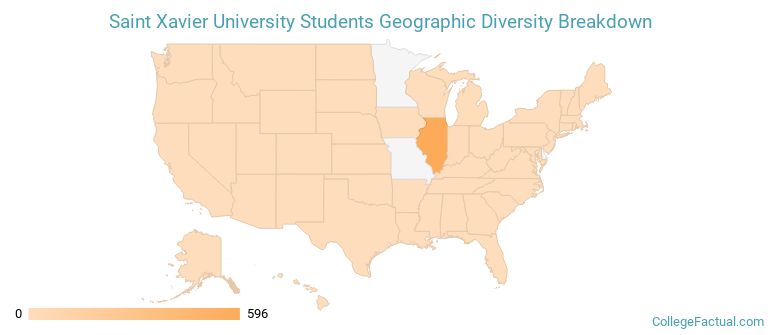
| State | Amount |
|---|---|
| Illinois | 596 |
| Indiana | 7 |
| Michigan | 5 |
| Florida | 1 |
| Alaska | 0 |
A traditional college student is defined as being between the ages of 18-21. At SXU, 54.45% of students fall into that category, compared to the national average of 60%.
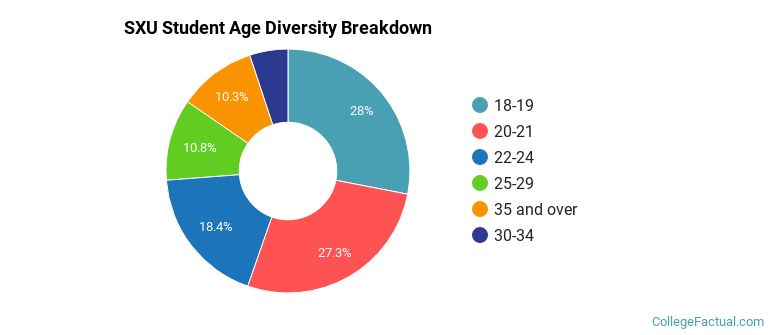
| Student Age Group | Amount |
|---|---|
| 18-19 | 1,025 |
| 20-21 | 998 |
| 22-24 | 674 |
| 25-29 | 395 |
| 35 and over | 377 |
| 30-34 | 186 |
| Under 18 | 0 |
Footnotes
*The racial-ethnic minorities count is calculated by taking the total number of students and subtracting white students, international students, and students whose race/ethnicity was unknown. This number is then divided by the total number of students at the school to obtain the racial-ethnic minorities percentage.
References
Department of Homeland Security Citizenship and Immigration Services
Image Credit: By Brendanriley under License
Find out how College Factual created their Diversity Rankings.